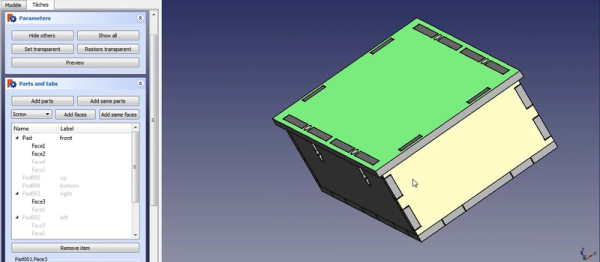FreeCAD is a fairly sophisticated, open-source, parametric 3D modeler. The open-source part means that you can bend it to your will. [Alexandre] is working on a module that lets him easily add tabs, finger joints, and t-slots to models (YouTube link, embedded down under).
Right now the plugin is still experimental, but it looks usable. In the video demo, [Alexandre] builds up a simple box, and then adds all manner of physical connective pieces to it. You’ll note that the tabs look like they’re pieces added on to the main face — that’s because they are! He then exports the outlines to SVG and erases the lines that separate the tabs from the sides, and hands these files off to his laser cutter. Voilà! A perfect tab-and-t-slot box, with only a little bit of hand-work. ([Alexandre] mentions that it’s all still very experimental and that you should check out your design before sending it to the laser.)
Continue reading “Add Slots And Tabs To Your Boxes In FreeCAD”












